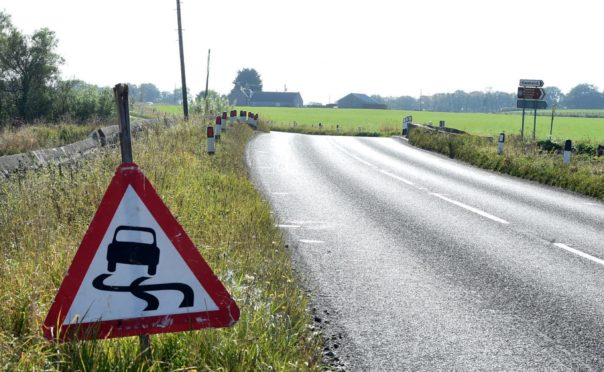A road improvement strategy more than a decade in the making has come in for criticism over its failure to deliver, despite an apparent reduction in accidents along the route.
A report on Aberdeenshire Council’s long-term plan to improve safety on the A947 Dyce to Banff road showed a significant drop in accidents and fatalities on the notorious route, despite little of the action plan actually having been implemented.
Providing an update to councillors the authority’s strategic transport officer Robert McGregor said: “The work on the A947 over the last 10 years years has been able to achieve short term impact in terms of safety and I think quite successfully a reduction in collisions and the seriousness of those.”
He added that there has been wider changes to the transport network, such as the new Aberdeen bypass and economic changes influencing how much people travel.
Over a 20-year timeframe, the strategy aims to reduce the number of accidents on the road, improve journey time, enable housing and employment growth along the corridor, improve public transport access and reduce driver frustration.
Turriff councillor Anne Stirling, said it had failed to deliver on every count so far.
“I would question the output and the outcomes of a strategy that is 10 years old and continue to be disappointed and perplexed as to why we have not seen any change in terms of what we might expect in terms of an important strategy such as this,” she said.
“The reason we put it into a strategy in the first place was because of the importance of this artery. Why have area committees not been cited on it on a more regular basis because this affects actually Garioch, Banff, Buchan and ourselves?”
Mrs Stirling also flagged up a lack of overtaking opportunities along the route, poor driver behaviour, an over-provision of signage, and inconsistency in speed limits along the road.
She also criticised a lack of consultation, a failure to join-up thinking between the strategy and the council’s road maintenance works meaning “low level issues” such as signage reviews, grass cutting around markers and clearing of overhanging trees had not taken place.
“We really need to try and deliver some of these issues otherwise the strategy will continue to gather dust and not make any move or improvement in the way we would have liked,” she added.
The number of serious and fatal collisions on the road has improved in recent years, with the report outlining that five crashes were recorded in 2019, compared with 11 in 2017 and 2018, and 21 in 2016.
Mid Formartine councillor Jim Gifford said the route improvements have been talked about “for ever and a day”.
“We do know the challenges in the strategy and the distinct lack of money to do any of it,” he added. “Given we have done precious little of what the strategy suggests how are we seeing the improvements we are seeing in welcomed reductions in casualty rates and severity of accidents?”
Road safety engineer Andrew Wilkinson said the statistics only show injury collisions rather than damage-only accidents.
“It is quite an anomaly that we can get such good reductions without the amount of work going in,” he added, crediting increased enforcement by police, increased skid resistance on the corners and simple things like replacing the market posts and cleaning signs making a difference.
A working group made up of Aberdeenshire Council members and officers was set up in 2018 to push on with the works, but has failed to stick to its planned bi-monthly meetings.
Committee chairwoman, councillor Isobel Davidson asked for regular meetings to recommence and the four relevant area committees provided with updates.
